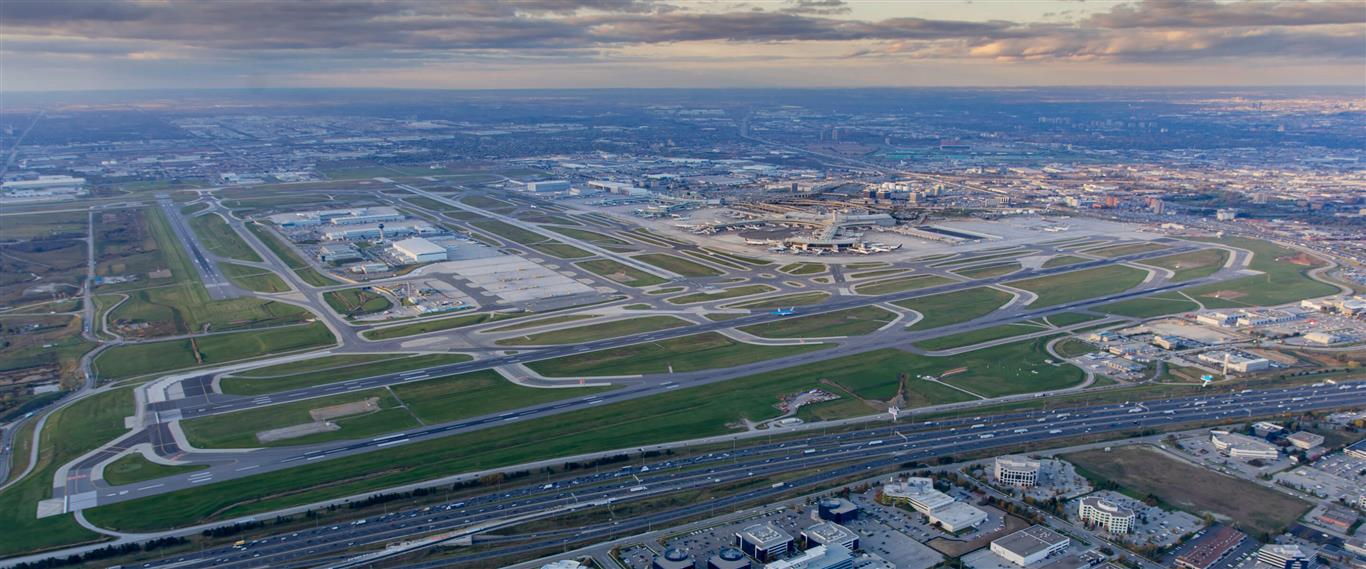Three-phase plan
The Greater Toronto Airports Authority (GTAA) and NAV Canada launched the Six Ideas as a three-phase plan that included community feedback from conception to completion.
- Phase 1: Stakeholder roundtables (summer 2015)
- Phase 2: Technical analysis (2015–2018)
- Phase 3: Public consultation (spring 2018)
Phase 1: Stakeholder roundtables
With NAV CANADA, we hosted a series of eight Stakeholder Roundtable discussions with small groups of highly engaged community members in July and August 2015. Attendees included leaders of local community associations and groups, elected officials, and our Community Environment and Noise Advisory Committee (CENAC) members – now represented in the new Noise Management Forums.
Feedback from the Stakeholder Roundtable discussions helped shape the process, criteria for decision-making, and next steps.
June 2015 meeting
Phase 1: Supporting materials (PDFs)
- Full list of Community Noise Mitigation Suggestions
- Stakeholder Roundtable Presentation
- LURA's Summary Report: Toronto Noise Mitigation Initiatives Summary Report on Stakeholder Roundtables
- Appendix A: Stakeholder Roundtable Summaries and Appendix B: Individual Stakeholder Submissions
- Summary Presentation
Phase 2: Technical analysis
Each idea underwent technical analysis to determine the benefits and impacts for local communities and feasibility, given the demand forecast for Toronto Pearson.
In May 2016, Phase 1 Stakeholder Roundtable participants were invited to attend a briefing for a Phase 2 progress update. The feedback from the technical briefing session helped finalize options for the next steps in the Technical Analysis. Technical analysis of each idea was completed in late 2017.
Phase 2: Supporting materials (PDFs)
- Technical Analysis Work Plan
- Technical Briefing presentation materials
- Technical Briefing feedback presentation
- Technical Briefing feedback
Phase 3: Public consultation
Communications and outreach for the Six Ideas began in February 2018. Multiple communications through a variety of stakeholder networks, digital and print channels reached more than 2.9 million people. The official comment period for the public consultation ran over seven weeks from March 3 to April 20, 2018 and offered several different options to provide input.
More than 430 people attended 19 public meetings throughout the region. Feedback was received from more than 900 people through a survey. Paper copies of the survey were given to participants at public meetings, and the survey was available online for the duration of the consultation period.
Phase 3: Supporting materials (PDFs)
- March 3 Community Briefing Presentation
- The Six Ideas brochure
- Toronto Pearson – Frequently Asked Questions
- Independent Toronto Airspace Noise Review
- NAV CANADA Response to Independent Airspace Review Report
- The report of the Toronto Pearson Residents’ Reference Panel on Airport Growth and Noise Fairness
- Growing Responsibly 2018-2022 Noise Management Action Plan
- Noise Management Program Benchmarking and Best Practices Study
- Glossary of Terms
The report
The results of the consultation are reflected in the final public engagement report. Read A Quieter Operations Roadmap: Six Ideas (PDF, 2.6 MB) and review the Report Appendices (PDF) for supporting data.
Idea overview
Idea 1 – New approaches for night-time operations
During busy daytime periods, the safe management of air traffic necessitates certain restrictions. However, when traffic volumes are lighter at night and single runway operations are being used, there are options to improve descent profiles that could reduce noise impacts.
Idea 2 – New departure procedures for night-time operations
There are opportunities to alter night-time departure procedures during lower traffic volume periods when only one runway is in use for departures. Increasing the altitude achieved before aircraft turns are permitted may deliver noise benefits for those under the departure flight path.
Idea 3 – Increase downwind arrival speeds
Changes to the published speeds on the “downwind” portion of the arrival flight path from 200 knots to 210 knots were implemented effective April 27, 2017 in the Canada Air Pilot, the pilot publication that includes all flight procedures in Canada. This change in speed restriction has the potential to reduce noise in some areas of the city by decreasing the need for flap use by pilots of larger aircraft needing to slow their airspeed as they approach the airport.
Idea 4 – Use new technology to reduce the need for low altitude levelling by arriving aircraft
Aircraft arriving at parallel runways require a level portion in the descent of each aircraft to ensure safe separation. There are noise impacts associated with power increases necessary to achieve low altitude level flight. New technologies could reduce the need for those level portions in flight profile and permit quieter, constant descent operations.
Idea 5 – Summer weekend runway alternation program
Traffic volumes on Saturdays and most of Sunday tend to be lower than other days of the week. The establishment of weekend preferential runways could facilitate runway alternation on weekends. Alternating runways could provide periods of weekend respite from noise for communities impacted by these operations.
Idea 6 – Review of preferential runway system
Preferential runways exist to ensure that aircraft landing and departing overnight impact the fewest people. The possibility to alternate use of night-time preferential runways might result in sharing night-time noise impacts from aircraft operations across more communities.
